Estimated reading time: 10 minutes
Homesteading life is filled with lots of fulfilling work, dirty jobs, great joys, and sometimes, tragic sorrow. The one sure way for a homestead to fail, and fail quickly, is to allow a predator problem to go unchecked. When wild animals are not taught farm avoidance, it will result in not only heartache, but wasted money, and a lot less food to put on the table.
The time to learn about what predators are lurking in the woods around your homestead is before you make a shocking, bloody discovery in your barnyard. Waiting until you've already lost animals or eggs to harden your pens, coops, and hutches make the threat you are facing far more substantial because the predator has already marked your homestead as its newest all-you-can-eat buffet.
Where you live will dictate not just what predators you face, but what you can do about them. Nuisance predator laws vary by state, leaving some homesteaders with fewer means of ridding themselves of the livestock killers than others. Most of the predators on this list are allowed to be trapped or killed in many states year around if they pose a threat to humans, crops, or livestock.
Consult your state wildlife agency's website for specific ordinances about nuisance predators before shooting or using a live or kill trap on any wild animal. Now on to the list. Here are the top 10 homesteading predators.
Want to save this post for later? Click Here to Pin It On Pinterest!
1. Minks
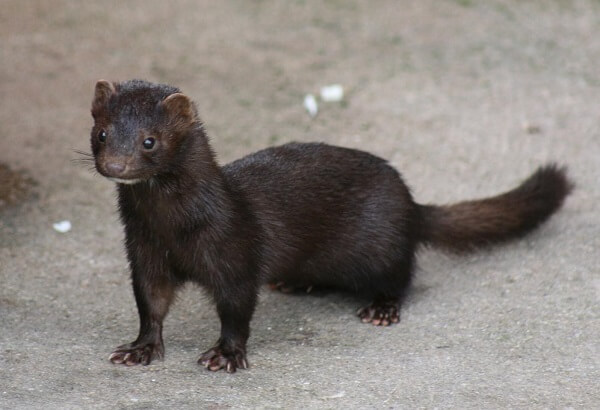
They may be small, but they are mighty vicious–and perhaps the hardest to trap–predator you will encounter around the homestead. Mink rarely ever venture far from a water source and often live alongside creeks, ravines, and ponds. Ducks are frequent victims of mink, who love to hide amid the tall grass around a pond and wait for lunch to waddle into a shallow area.
Even a large domesticated duck, like a Pekin, can be killed quickly by a mink's sharp claws and pulled away from the pond and into the brush toward the small predator's den. If the mink cannot get the dead duck lugged away to a safe place to eat it because of its bulk, the predator will often go back to the kill site and try again.
Chickens can also be prey for mink, even if they aren't free-ranging. A mink can squeeze inside a hole that is only two inches in diameter. This is why chicken wire is not the type of material to choose when constructing a coop run. Hardware cloth is more rigid and can be purchased with square openings that are too small for a mink to push through.
Chicken wire is great to keep the flock in, but absolutely will not keep mink and similar predators out. Instead, dig a trench about one foot deep and one foot wide around your chicken coop and run, or duck hut, to further help defray the mink and other digging predators from burrowing underground to reach your flock.
2. Hawks
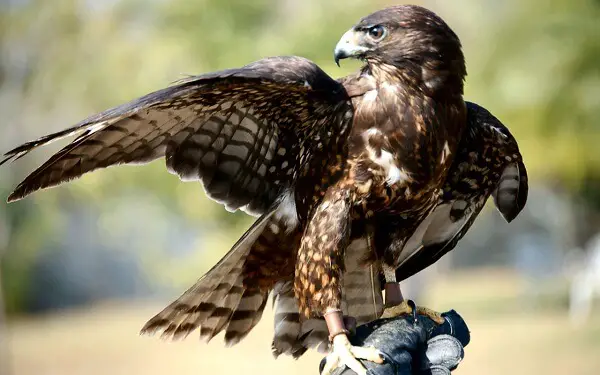
Hawks are one of the most consistent small livestock predators, but they are protected birds of prey and cannot legally be trapped or killed in any state. If members of your flock are disappearing without leaving a single drop of blood behind, they likely became dinner for a hawk. There are ways to teach a hawk farm avoidance without getting cited for a crime.
A hawk's vision is intensely magnified. It may sound a bit silly, but if you paint a huge set of eyeballs on your chicken coop (preferably on the top and at least one side) and on wood or metal you turned into barnyard billboards, it should frighten hawks into thinking a predator larger than themselves, has already claimed the area.
Reflective tape, motion-activated owl decoys, and dangling old compact discs are also great non-lethal means that can legally be used to deter hawks.
3. Coyotes
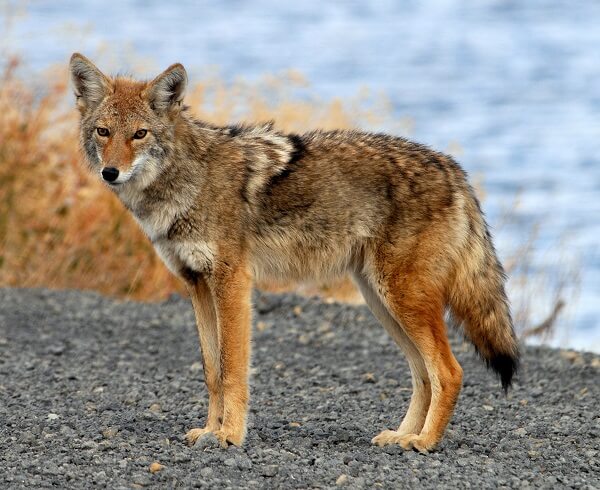
While it is still illegal to trap or kill coyotes in some states, in other states it is open season on these deadly homestead predators. Coyotes frequently target both small and medium-sized livestock like chickens, ducks, pigs, young goats, and lambs. Packs of coyotes are also known to attack large livestock like cattle.
Miniature donkeys hate coyotes and will run themselves to the edge of exhaustion to kick the elusive predators. The resurgence in coyote populations in many regions of the country have also made miniature donkeys very popular with farmers and homesteaders. Unlike many mules, miniature or otherwise, most mini donkeys boast a pleasant disposition and, with a little training, are willing to give rides to children when they are not on coyote patrol.
4. Owls
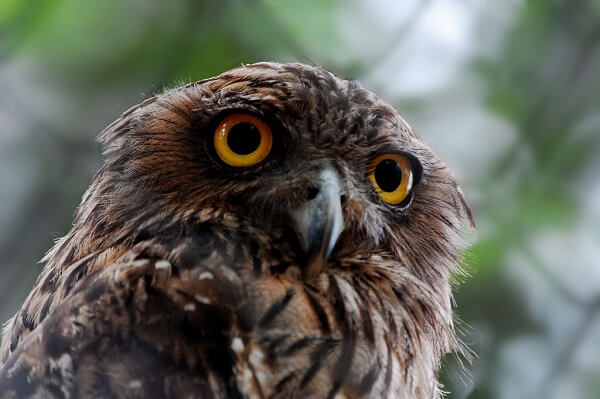
Having an owl take up residence in your barn might keep away mice and help thwart snakes, but usually costs you a lot of small poultry as well, if free-ranging is conducted on the homestead. Thankfully, owls are nocturnal predators, so you can still permit your flock to free range to maintain as natural a diet as possible while ridding the homestead of bugs and keeping feed costs down.
Putting the flock in their coop or run from dusk until dawn should protect them from owl attacks. Place motion detector lights and animated decoys around the barn and coop to deter owls from taking up residence near your livestock.
5. Wild Boars
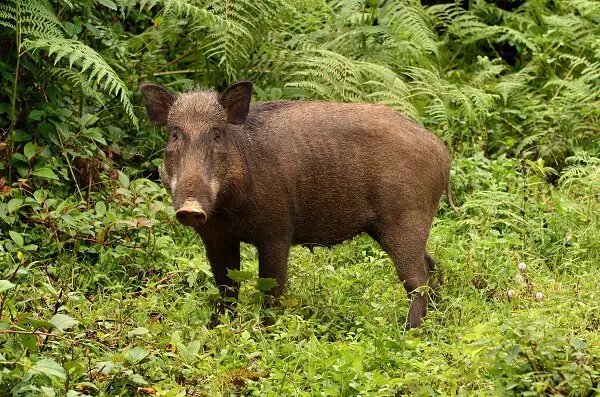
Whether these homestead predators are referred to as wild boar or wild hogs in your neck of the woods, these feral animals can be highly destructive to your crops and are often ferocious beasts. Boar have the capability to take down medium-sized livestock like goats and sheep, and even young calves.
Dead fall traps are commonly used to capture and kill wild boar, but they may not be legal in all states. Feral hogs typically drag their prey off into the woods to consume it, leaving a long trail of blood behind.
6. Bobcats

Although their populations were once considered dwindling in many regions of the United States, bobcats are once again being spotted in increasingly larger numbers. Even though bobcats do not possess the massive 35-inch reach of mountain lions, do not underestimate the deadly nature of these small wild cats. The agile bobcat can stretch its claws approximately 15 inches through a small space to catch and kill small prey like rabbits, chickens, and ducks.
Despite their size, bobcats are capable of killing both sheep and goats, as well. Typically, the cats will jump on the back of victims and use their claws and teeth to slice its jugular vein. Homesteading livestock killed in this manner suffer a painful death. They usually die of shock or bleed out before being eaten by the bobcat. Like skunks, bobcats often sneak into nesting boxes to steal eggs.
7. Raccoons
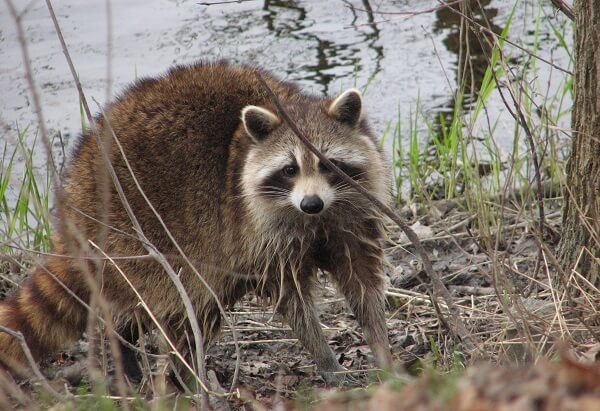
These clever little predators can flip open a simple single-action lock in a matter of minutes to get to some food. All of the doors to coops and hutches should be secured with a more advanced and at least a two-step lock to prevent entry, and loss of livestock, at the hands of coons. Raccoons have voracious appetites and can kill and eat several chickens, ducks, or rabbits during a single attack.
They are too small to kill medium-sized livestock, but they've been known to attack young lambs and baby goats on occasion. A coon can rob you of all the eggs in the nesting boxes in one fell swoop. If one of the small predators gains access to a coop, it may work all night long to carefully carry each egg back to their hollow tree home to dine on for days.
Raccoons are considered nuisance predators in most states, with both live and kill trapping methods being typically legal to rid the homestead of their presence.
8. Foxes
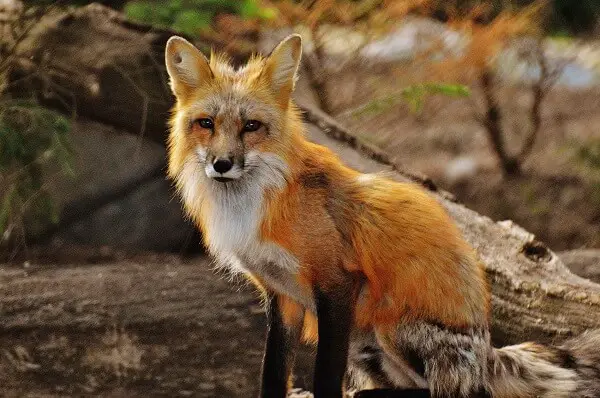
Free-ranging livestock are almost constantly at risk of a fox attack in most rural regions of America. The small and stealthy creatures truly do live up to their “sly” reputation. A fox can often stalk small prey undetected, grab a single chicken or duck by its neck, and then run off into the woods to consume its victim. Like hawks, a fox leaves little evidence it has even been in the barnyard.
Keeping a flock of guineas, the junkyard dogs of the poultry world, will help protect your flock from attack by a fox or other predator. The extremely vocal and rather odd-looking birds shriek to alert members of the barnyard to danger and gang up on any predator that ventures too close to their territory.
9. Weasels
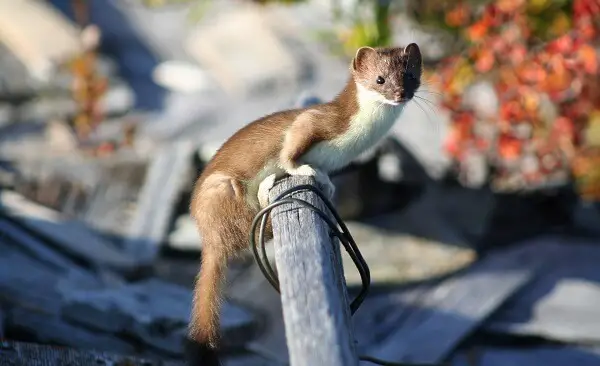
Weasels are good climbers like raccoons and as treacherous and elusive as the mink. A weasel typically bites off the head and neck of small prey, leaving a shocking sight for you to discover the following morning. A weasel is often prone to stacking up the decapitated dead bodies of poultry not far from where the killing occurred.
Building strong enclosures out of hardware cloth and using the same material to create a below-ground barrier to curtail digging usually helps keep weasels out of the chicken coop or duck hut. Motion detector lights, guineas, and motion activated decoys will help keep weasels away from your meat birds and eggs.
10. Wolves
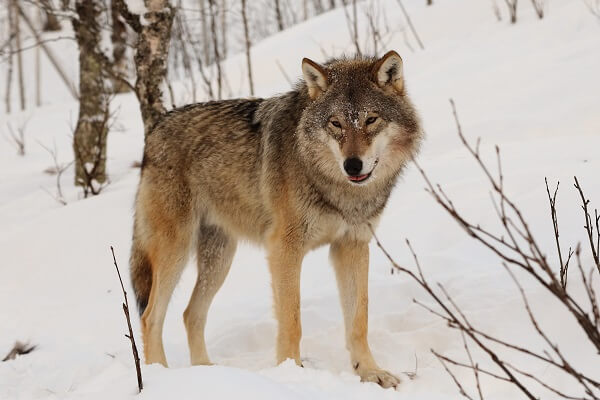
Wolves still enjoy protected status in many states, but in some regions, property owners have regained at least some ability to thwart their efforts to kill large livestock and pets. A wolf uses its incredibly sharp claws and teeth to take down cows and pigs. Once the wolf has its prey on the ground, the animal is usually disemboweled and then eaten where it fell in rapid fashion.
Learning how to identify the tracks, signs, and droppings of predators native to your area will aid in the identification of threats in the nearby woods. Keeping a livestock guardian dog, like the Great Pyrenees in the barnyard, can also serve as a steadfast deterrent to most predators.
Like this post? Don't Forget to Pin It On Pinterest!


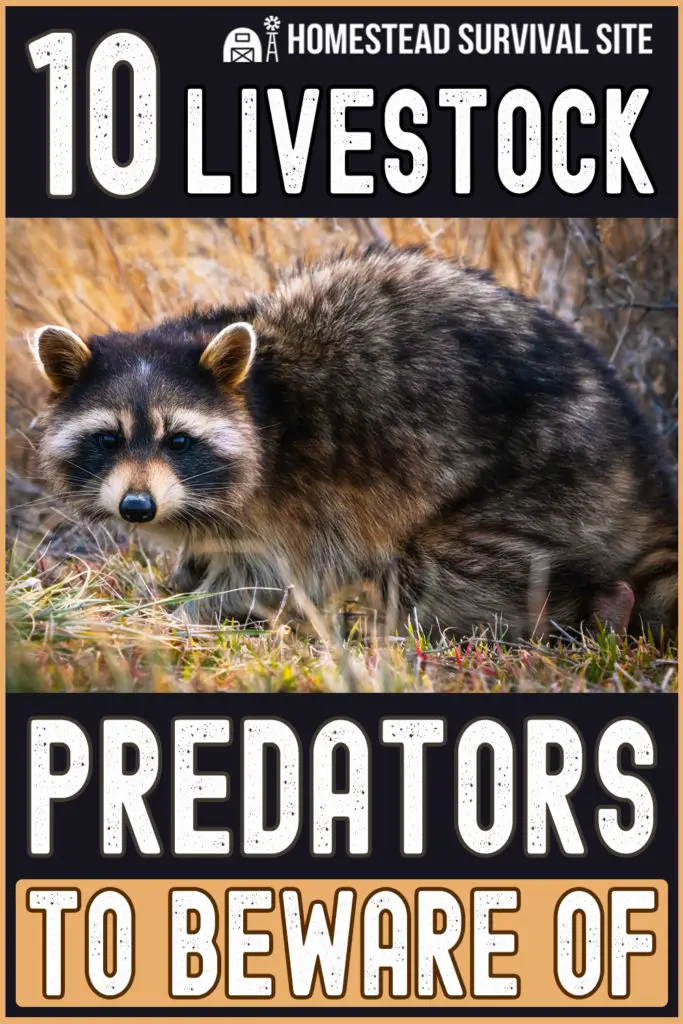

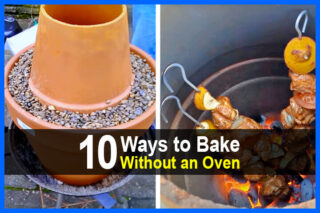
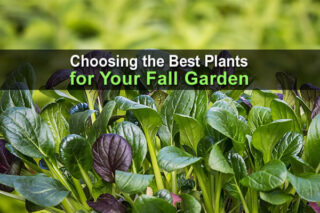

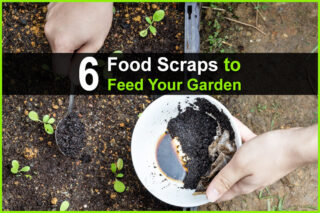


Skunks can cause a lot of problems as well.
Nice article!! Depending on where you live, there are also: eagles, lynx, bears, cougars, snakes, alligators, badgers, wolverines, and opossums, as well as the skunk mentioned by Keebler in their comment. All will threaten livestock in one way or another. Some kill (and eat) the animal outright and others will eat eggs of the future generation of chickens, ducks, guineas and geese (or your future breakfast!). Plus there are also the closer to home animals, cats and dogs that can do damage, too.
Trish and Keebler, yes all great predators to be on the look out for around the homestead. It is quite surprising how destructive possums and skunks can be. My husband laughed at me when I told him they will kill chickens and ducks he thought the only stole their eggs – while that is what the little predators usually do, they can and will kill small livestock as well.
You left out fisher.
California also has Black Bear and Mountain Lions in abundance. We also have a lot of Bleeding Hearts who place Mountain Lions on a protected list where they are Not Endangered. Which means a permit to eliminate has become time consuming and costly. Both of these animals have a hunting range of up to 10 square miles. Plus both animals are capable of hunting during the day/night. Bears are like us, they can eat anything..they can and will grab a handy snack of fowl, young livestock and can pick locks, break down fencing what have you. Good article, glad you included Wild Boar (which we also have) as like the bear will destroy fencing (4×4’s) without a thought.
IN australia you get dingoes, feral cats and feral dogs.
We also get feral pigs that are a problem, so you can shoot and trap them if you have a very big gun, alot of ammo and some big pig dogs to track and corner them.
Possums are a real pain